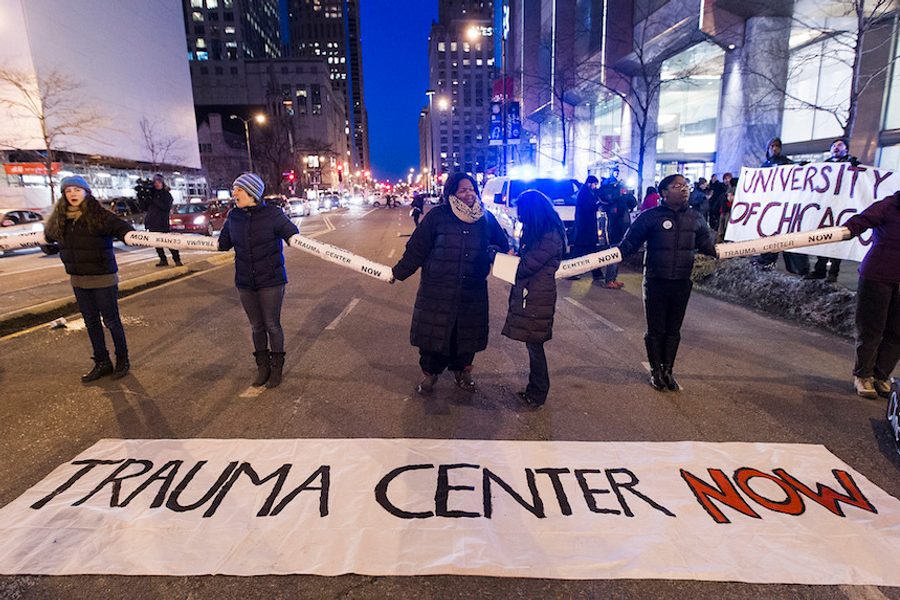A trauma center will finally be built on the South Side of Chicago — and it only took a quarter century.
University of Chicago Medicine (UCM) and the Sinai Health System are partnering up on a multi-million-dollar effort to install a Level 1 adult trauma center at Holy Cross Hospital in the Marquette Park neighborhood, officials announced Thursday. The new, state-of-the-art trauma center will be located at 68th Street and California Avenue, in the thick of the city’s most violent neighborhoods.
Since the death of drive-by shooting victim Damian Turner in 2010, activists have renewed the push for UCM, backed by an endowment of more than $1 billion, to provide adult trauma care at its Hyde Park medical center. The 18-year-old was shot just three blocks from UCM, but had to be transported more than nine miles away since the university closed its adult trauma center in 1988 for financial reasons.
While the decision is being declared a victory by some activists and community organizers who have been advocating for more comprehensive South Side emergency facilities, others say the center won’t fully solve the problem.
The Trauma Center Coalition, an organization of seven community and national groups, organized protests following Turner’s death. In a statement posted online, the organization expressed mixed feelings about Thursday’s announcement:
The trauma center at Holy Cross represents a victory for the south side and it’s happening because of young black people and allies. … It’s still not enough, U of C hasn’t done enough to show that black lives matter. There are still large swaths of the south side that will not be adequately served by the new trauma center. South Shore, East Woodlawn, Kenwood, and other South Side neighborhoods with higher gun violence rates are still more than five miles away from an adult trauma center.
The $40 million joint project would create the South Side’s first adult trauma center since the Michael Reese Hospital closed in 1991. Advocates for a South Side facility often point to a 2013 study, led by Northwestern University trauma surgeon Dr. Marie Crandall, which found that Chicago gunshot victims who are more than five miles away from a trauma center face a greater chance of mortality.
Although the new center will bring 22 wards within a five mile radius of a trauma center, the city’s 10th Ward still lies far outside that radius. Some residents of its Hegewisch neighborhood would still have to travel more than 14 miles to get emergency treatment at a Level 1 trauma center.
The approval process and construction of the Holy Cross trauma center is expected to take at least two years. It will be one of five adult trauma centers in the city of Chicago, including Northwestern Memorial Hospital on the Near North Side, Advocate Illinois Masonic Medical Center on the North Side, and Stroger Hospital and Mount Sinai on the West Side.





